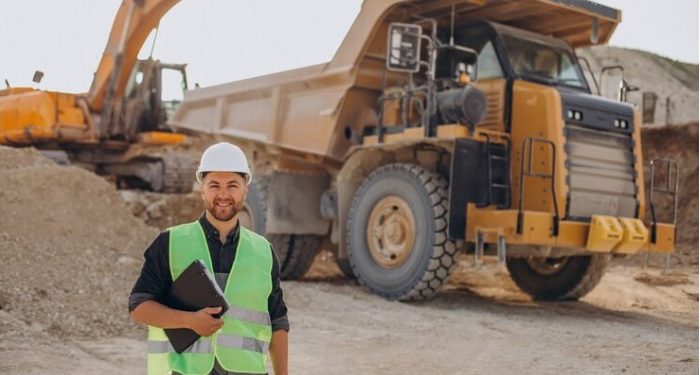The concept of urban sanitation has been a fundamental aspect of civilization since the early days of cities. As settlements grew in size and population, the need for clean streets became increasingly apparent. In ancient cities, streets were not only used for transportation but also served as public spaces where people conducted their daily activities. From bustling markets to communal gatherings, the streets were at the heart of city life. However, the accumulation of waste and garbage posed significant challenges to the health and well-being of the inhabitants.
With the rapid growth of urban areas and the concentration of people in close proximity, the importance of maintaining clean streets became imperative. In earlier times, the disposal of waste was often a haphazard and unsanitary process. Waste would be discarded onto streets, creating a breeding ground for diseases and attracting pests. The lack of proper sanitation measures not only posed a threat to public health but also hindered the development and prosperity of cities. It was, therefore, essential to find ways to ensure the cleanliness of streets to safeguard the well-being of the population.
Pre-Industrial Cleaning Methods: How streets were manually cleaned before the invention of street sweeper trucks
Before the invention of street sweeper trucks, urban sanitation relied on manual cleaning methods. In early cities, the responsibility of keeping the streets clean fell upon a small number of workers known as scavengers or rakers. Armed with basic tools such as shovels, brooms, and carts, these individuals were tasked with the arduous job of clearing the streets of waste, debris, and animal manure.
Cleaning the streets manually was a labor-intensive and time-consuming process. Scavengers had to meticulously sweep the dirt and rubbish from the streets, collect it into piles, and then transport it away using their carts. This method required significant physical strength and stamina, as well as the ability to work consistently in all weather conditions. While it was a crude and primitive approach, it addressed the immediate need for clean streets in early cities and provided the groundwork for future advancements in street cleaning technology.
Early Mechanized Cleaning: Examining the first attempts at mechanized street cleaning
The first attempts at mechanized street cleaning can be traced back to the late 19th century when cities started looking for ways to improve cleanliness and hygiene on their streets. One of the earliest machines used for this purpose was the horse-drawn sweeping machine. These machines were equipped with rotating brushes that would sweep the dirt and debris off the streets. Although the horse-drawn sweeping machines were a significant improvement over manual cleaning methods, they still had limitations.
Another innovative invention during this period was the steam-powered street sweeper. These machines used steam engines to power the sweeping brushes, enabling them to cover larger areas and clean more efficiently. The steam-powered street sweepers were also equipped with water tanks that sprayed water onto the streets to suppress dust particles. While these early mechanized cleaning machines were a step forward in street cleaning technology, they were still quite primitive compared to the advanced street sweeper trucks we have today.
The Birth of Street Sweeper Trucks: Tracing the development and introduction of the first street sweeper trucks
In the early 19th century, urban areas faced a significant challenge when it came to maintaining clean and sanitary streets. With the rapid population growth and industrialization, cities were plagued by the accumulation of trash, animal waste, and other debris. This led to unsightly and unsanitary conditions, posing a serious threat to public health. The need for a more efficient method of street cleaning became apparent, giving rise to the birth of street sweeper trucks.
The first attempts at mechanized street cleaning can be traced back to the 1840s, when horse-drawn contraptions were used to collect debris from the streets. These early models were crude and inefficient, often causing damage to the roads themselves. However, they marked a significant step forward in addressing the issue of street cleanliness. Over time, improvements in design and technology led to more effective and reliable street sweeper trucks, helping cities tackle the growing challenge of waste management and sanitation.
Advancements in Cleaning Technology: Exploring the innovations that improved street sweeper trucks over time
Street sweeper trucks have undergone numerous advancements in cleaning technology, resulting in more efficient and effective cleaning methods. One key innovation is the introduction of mechanical brooms, which revolutionized the street sweeping industry. These mechanical brooms, also known as brush systems, are equipped with rotating brushes that sweep up debris and dirt from the streets. They replaced the earlier manual methods of sweeping, significantly reducing the time and effort required for street cleaning. Mechanical brooms have been further improved over time, with the addition of adjustable brush heights and increased brush speeds, allowing for better cleaning of different types of surfaces.
Another notable advancement in cleaning technology for street sweeper trucks is the development of vacuum systems. These systems utilize powerful suction to remove dirt, leaves, and other debris from the streets. Vacuum street sweepers can efficiently collect larger particles, such as leaves or small branches, without causing damage to the street surface. The introduction of vacuum systems has greatly enhanced the cleaning capabilities of street sweeper trucks, ensuring a more thorough and comprehensive cleaning process. Additionally, these systems often include a filtration mechanism that prevents fine particles from being released back into the air, contributing to improved air quality in urban areas.
Impact on Public Health: Discussing the role of street sweeper trucks in preventing diseases and improving hygiene
Street sweeper trucks play a crucial role in preventing the spread of diseases and promoting better hygiene in urban areas. The regular cleaning of streets and public spaces by these trucks removes accumulated dirt, debris, and other potential sources of contamination. By clearing away this waste, street sweeper trucks help to eliminate breeding grounds for disease-carrying insects, such as mosquitoes and rats. Additionally, the removal of trash and litter prevents the buildup of harmful bacteria, viruses, and germs that can pose health risks to the general public.
Moreover, street sweeper trucks also contribute to improving overall hygiene by reducing odors and improving air quality. As they sweep the streets, these trucks pick up decaying organic matter and other debris that can emit unpleasant odors. By eliminating these sources of unpleasant smells, street sweeper trucks create a more pleasant and sanitary environment for urban residents. Furthermore, by removing these debris, street sweeper trucks help prevent the release of particulate matter into the air, which can have adverse effects on respiratory health. Overall, the role of street sweeper trucks in maintaining cleanliness and sanitation is vital in ensuring the well-being and health of urban populations.
Different Types of Street Sweeper Trucks: Examining the various models and designs used throughout history
Throughout history, there have been a wide variety of street sweeper trucks that have been used to keep the streets clean. One of the earliest designs was the horse-drawn sweeper, which consisted of a large brush attached to the front of a carriage. As the carriage moved down the streets, the brush would rotate and sweep debris into a collection bin. This design was effective in its simplicity, but it relied heavily on the strength and endurance of the horses pulling the carriage.
In later years, advancements in technology led to the development of mechanical street sweeper trucks. These trucks were equipped with rotating brushes and a vacuum system that sucked up debris from the streets. This design proved to be more efficient and reliable than the horse-drawn sweepers. Additionally, some models were equipped with water tanks and spray nozzles to dampen the dust on the streets, further improving the cleanliness of the roads. These early mechanical street sweeper trucks laid the foundation for the more advanced models that would come in the future.
Evolution of Street Sweeping Techniques: Investigating the different methods and approaches used in street cleaning
Street sweeping techniques have come a long way since the early days of manual cleaning. In the past, brooms made from natural materials like straw or twigs were used to sweep the dirt and debris off the streets. Workers would walk alongside the broom, carefully sweeping the dirt into piles before collecting it for disposal. This method, although effective to some extent, was incredibly time-consuming and required a large workforce to keep the streets clean. It was evident that a more efficient and less labor-intensive approach was needed.
As technology advanced, mechanized street sweeping techniques were introduced. In the late 19th century, horse-drawn sweeping machines made their appearance. These machines, equipped with a rotating brush, replaced the need for manual Labor. The brush would spin rapidly, dislodging dirt and debris from the street surface, which was then collected in a receptacle attached to the machine. This mechanized approach significantly sped up the cleaning process and reduced the manpower required. However, it still relied on animal power, and the limited capacity of the receptacle meant frequent stops for emptying, hindering efficiency.
Challenges and Obstacles: Highlighting the difficulties faced in maintaining and operating street sweeper trucks
Street sweeper trucks play a crucial role in maintaining cleanliness and hygiene in urban areas. However, they also face various challenges and obstacles in their operation and maintenance. One significant challenge is the issue of waste disposal. Street sweeper trucks accumulate a large amount of debris and waste as they clean the streets. Proper disposal of this waste is essential to prevent it from polluting the environment. Municipalities often face difficulties in finding suitable disposal sites for the waste collected by street sweeper trucks. Limited landfill space and strict regulations regarding waste disposal pose significant obstacles in this regard. It requires careful planning and coordination to ensure sustainable waste management practices for street sweeper trucks.
Another challenge faced in maintaining and operating street sweeper trucks is the need for regular maintenance and repairs. As these vehicles perform heavy-duty cleaning tasks, they are subjected to extensive wear and tear. The constant exposure to dirt, debris, and harsh weather conditions can lead to mechanical failures and breakdowns. Ensuring the smooth functioning of the sweeping mechanisms, sweep brushes, and vacuum system requires regular inspections and timely repairs. Municipality authorities responsible for the operation of street sweeper trucks often face difficulties in budgeting for these maintenance costs. Additionally, the availability of skilled technicians and spare parts can also pose challenges in maintaining an efficient fleet of street sweeper trucks.
Modern Street Sweeper Trucks: Discussing the latest technologies and features in street sweeper trucks today
In recent years, advancements in technology have revolutionized the capabilities of modern street sweeper trucks. One such innovation is the introduction of high-powered vacuum systems. These sophisticated machines are equipped with powerful suction capabilities, allowing them to effortlessly remove debris, dirt, and even larger objects from the streets. Coupled with rotating brushes, these vacuum systems ensure thorough cleaning and leave the streets looking spotless.
Additionally, modern street sweeper trucks are now equipped with advanced GPS systems that enable more efficient and targeted cleaning. These systems allow operators to map out routes, track their progress, and identify areas that require immediate attention. By optimizing their cleaning routes, street sweeper trucks can cover larger areas in less time, resulting in more effective and productive sanitation efforts. The GPS systems also provide real-time data on cleaning operations, enabling better monitoring and evaluation of performance.







